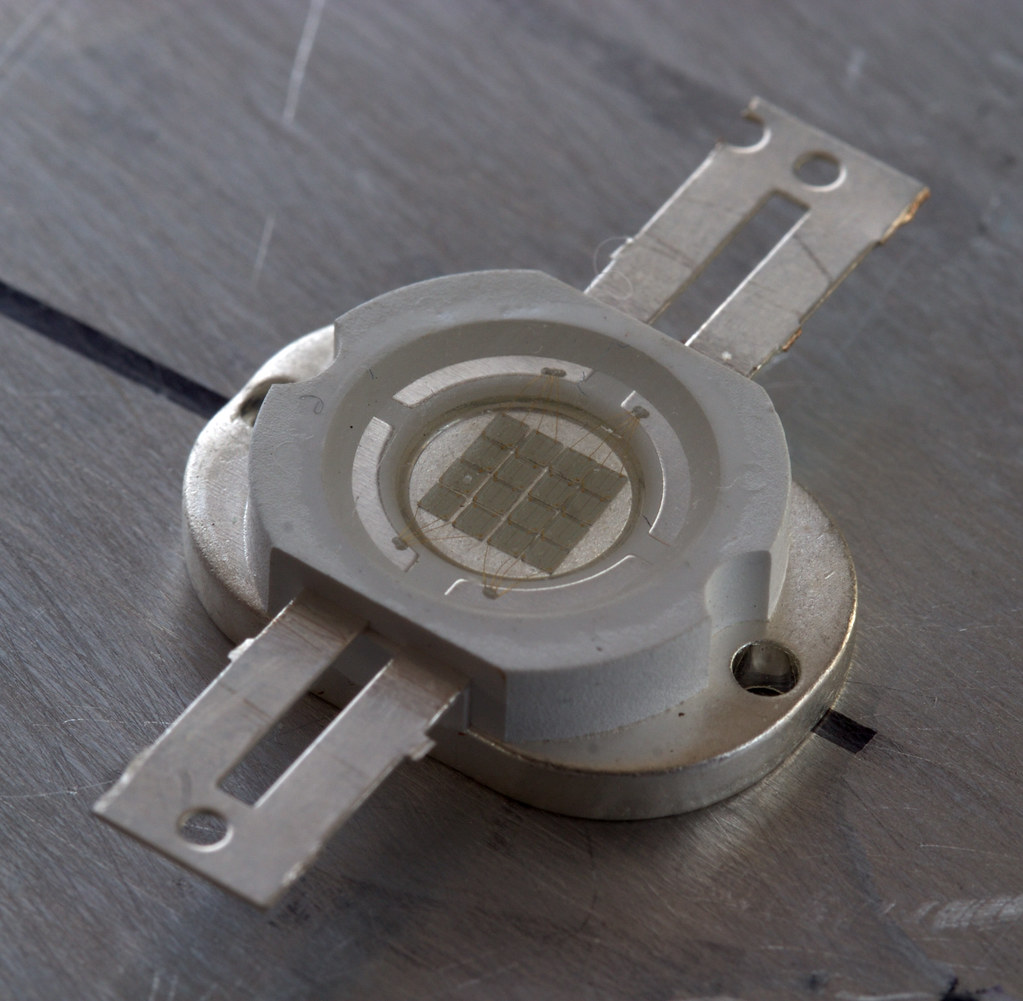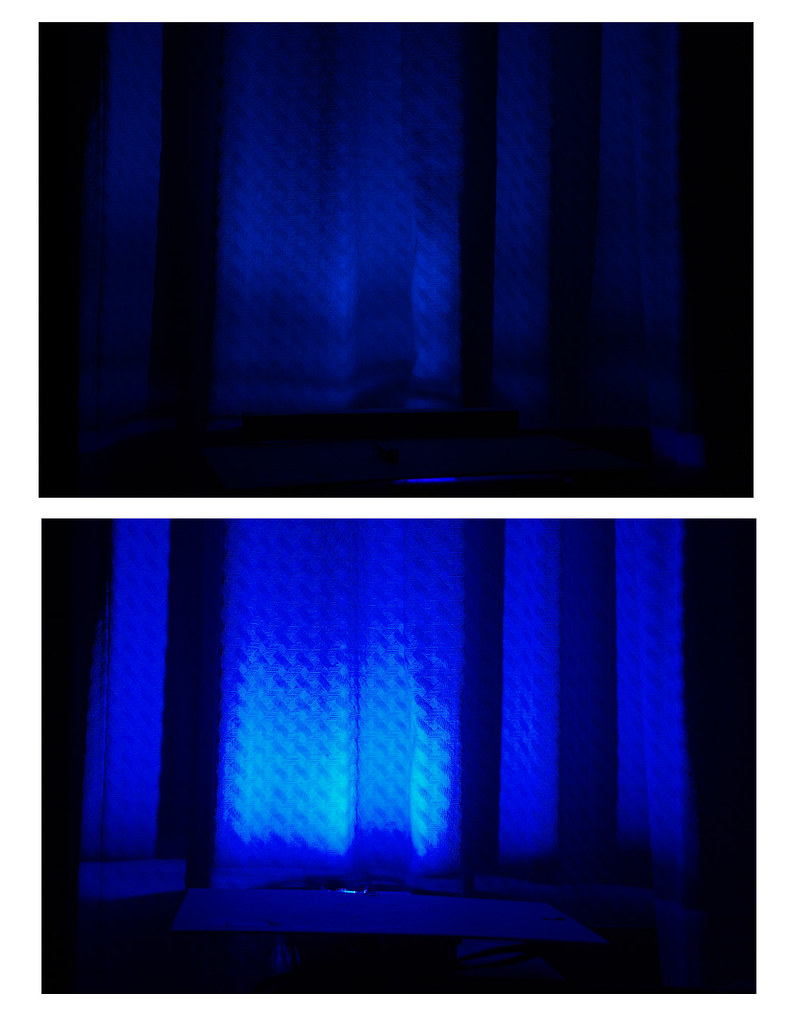blasterman
Flashlight Enthusiast
- Joined
- Jul 17, 2008
- Messages
- 1,802
Why is the world would you need a 20-watt blue LED? Well, since I work with reef tank lighting, I'm trying to replicate the blue intensity of 14-20k Metal halide lamps for PAR reasons. Messing around with 3-watt emitters just aint cutting it.
I looked closely at Phlatlight and Ledengin, and didn't see too many options there. Perhaps Phlatlight, but big blue ones are still pricey and never in stock. Bridgelux is ignoring my pestering to make a blue LED.
However, since I've been using 3-watt blue and red Satistronics for plant lights, I decided to give their 20-watt blue monster a try.
Surprisingly, it's a well made emitter (actually an array of 16 smaller ones). At it's top rated 18 volts it's supposed to produce 400 lumens, which I don't dispute, but I don't have testing equipment. However, I did have a 3watt blue Cree XRE for comparison. I shot a picture of the Cree at 700mA (current regulated )and the Satistronics at 18volts fixed with 1ohm resistor in the same orientation and same manual camera settings against some curtains. I don't have a current regulated driver on the shelf big enough for the 20watt at the moment, but that should be close enough for reference.
One difference you can't pick up in the shots is color. Regular Blue Crees tend to often be very cyan, while Satistronics and BestHongKong Blue emitters can range to almost Royal Blue. This emitter is somewhere in between.
I should note this is the only emitter I've worked with that with even averted vision was physically painfull to view. Heatsink requirements are also pretty hefty, and a big HeatsinkUSA brick was required to keep the emitter warm to the touch. I've got two of these on my 10gallon tank, and thinking about getting a third. The list of diabolical applications for an emitter like this is endless; highly discouraging security lights, faking a UFO invasion on halloween, growing a lot of lettuce, etc.


I looked closely at Phlatlight and Ledengin, and didn't see too many options there. Perhaps Phlatlight, but big blue ones are still pricey and never in stock. Bridgelux is ignoring my pestering to make a blue LED.
However, since I've been using 3-watt blue and red Satistronics for plant lights, I decided to give their 20-watt blue monster a try.
Surprisingly, it's a well made emitter (actually an array of 16 smaller ones). At it's top rated 18 volts it's supposed to produce 400 lumens, which I don't dispute, but I don't have testing equipment. However, I did have a 3watt blue Cree XRE for comparison. I shot a picture of the Cree at 700mA (current regulated )and the Satistronics at 18volts fixed with 1ohm resistor in the same orientation and same manual camera settings against some curtains. I don't have a current regulated driver on the shelf big enough for the 20watt at the moment, but that should be close enough for reference.
One difference you can't pick up in the shots is color. Regular Blue Crees tend to often be very cyan, while Satistronics and BestHongKong Blue emitters can range to almost Royal Blue. This emitter is somewhere in between.
I should note this is the only emitter I've worked with that with even averted vision was physically painfull to view. Heatsink requirements are also pretty hefty, and a big HeatsinkUSA brick was required to keep the emitter warm to the touch. I've got two of these on my 10gallon tank, and thinking about getting a third. The list of diabolical applications for an emitter like this is endless; highly discouraging security lights, faking a UFO invasion on halloween, growing a lot of lettuce, etc.




